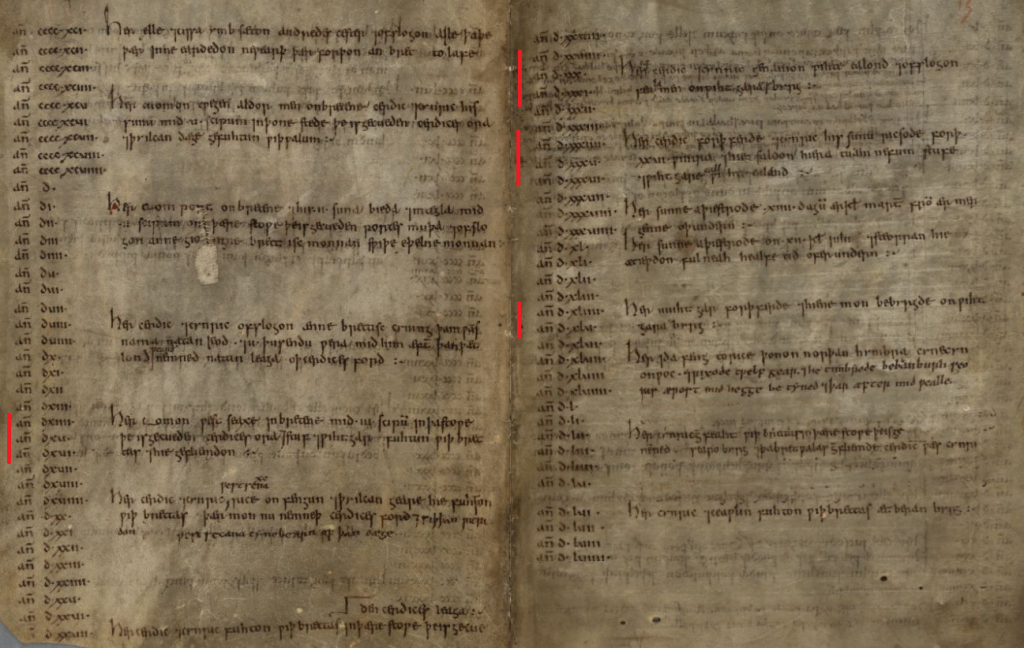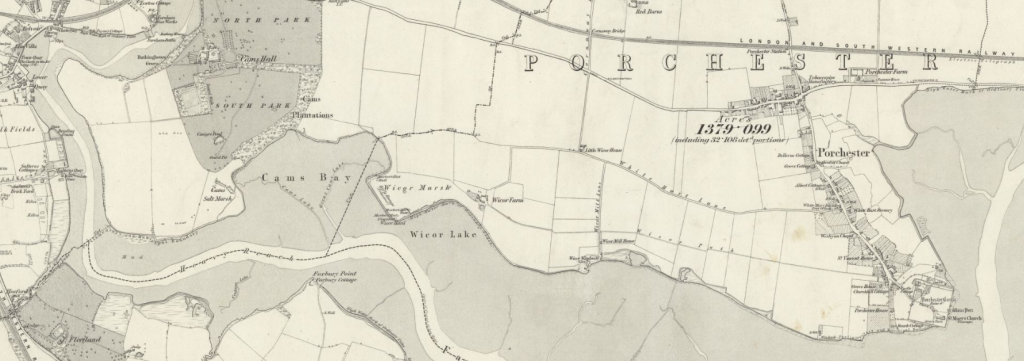
The Anglo-Saxon Chronicle makes a number of references to a Wihtgar under the years 514, 534 and 544:
Her cuomon Westseaxe in Bretene mid .iii. scipum in þa stowe þe is gecueden Cerdicesora, Stuf 7 Wihtgar, 7 fuhton wiþ Brettas 7 hie gefliemdon.
jebson t., 2007. swanton m., 2000, 14, 16 (adapted). asc A.
Her Cerdic forþferde, 7 Cynric his sunu ricsode forþ .xxvi. wintra; 7 hie saldon hiera tuæm nefum Stufe 7 Wihtgare eall Wiehte ealond.
Her Uuihtgar forþferde, 7 hiene mon bebyrgde on Wihtgarabyrg.
Here the West Saxons Stuf and Wihtgar came to Britain with 3 ships in the place which is called Cerdic’s Shore and fought against the Britons and put them to flight.
Here Cerdic passed away, and his son Cynric continued to rule 26 years. And they gave all Wight to their two nephews Stuf and Wihtgar.
Here Wihtgar passed away and they buried him at Wihtgar’s stronghold.
There is a further reference to Wihtgar’s stronghold under the year 530:
Her Cerdic 7 Cynric genamon Wihte ealond 7 ofslogon feala men on Wihtgarabyrg.
jebson t., 2007. swanton m., 2000, 16 (adapted). asc A.
Here Cerdic and Cynric took the Isle of Wight and killed a few men at Wihtgar’s stronghold.
Swanton says that the most obvious location for the stronghold is Carisbrooke Castle where a cemetery of this period contained a high status male grave. It is proposed his name appears in various forms, namely Wicgr, Wicker and Wicor on old maps, one of which is shown below:

The letter ⟨t⟩ can become a ⟨c⟩, as seen in the name Wihtgar to Wicgr. The map shows Wicgr Marsh to the east of Cams Bay and several places named Wicor along the northern bank of Portsmouth Harbour, including Wicor Path that leads towards Portchester castle.
Speculations
Was Wicor Path the route the Saxons took from their stronghold of Portchester castle to do battle with Arthur? Could they have sealed off the Cams, the proposed location of Camlan, where Arthur was encamped? It is an area enclosed on three sides by the river Wallington. Its name derives from that of the village where the river enters Portsmouth Harbour and means ‘settlement of the Welsh’.
